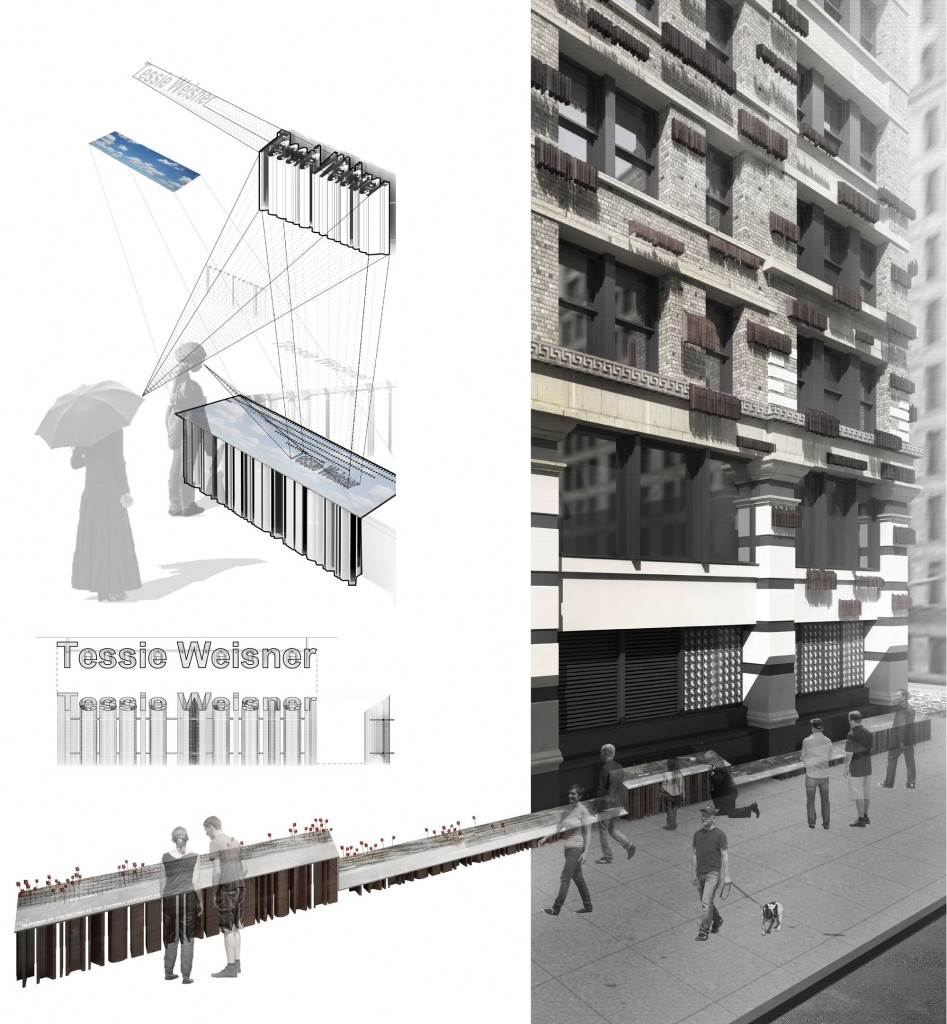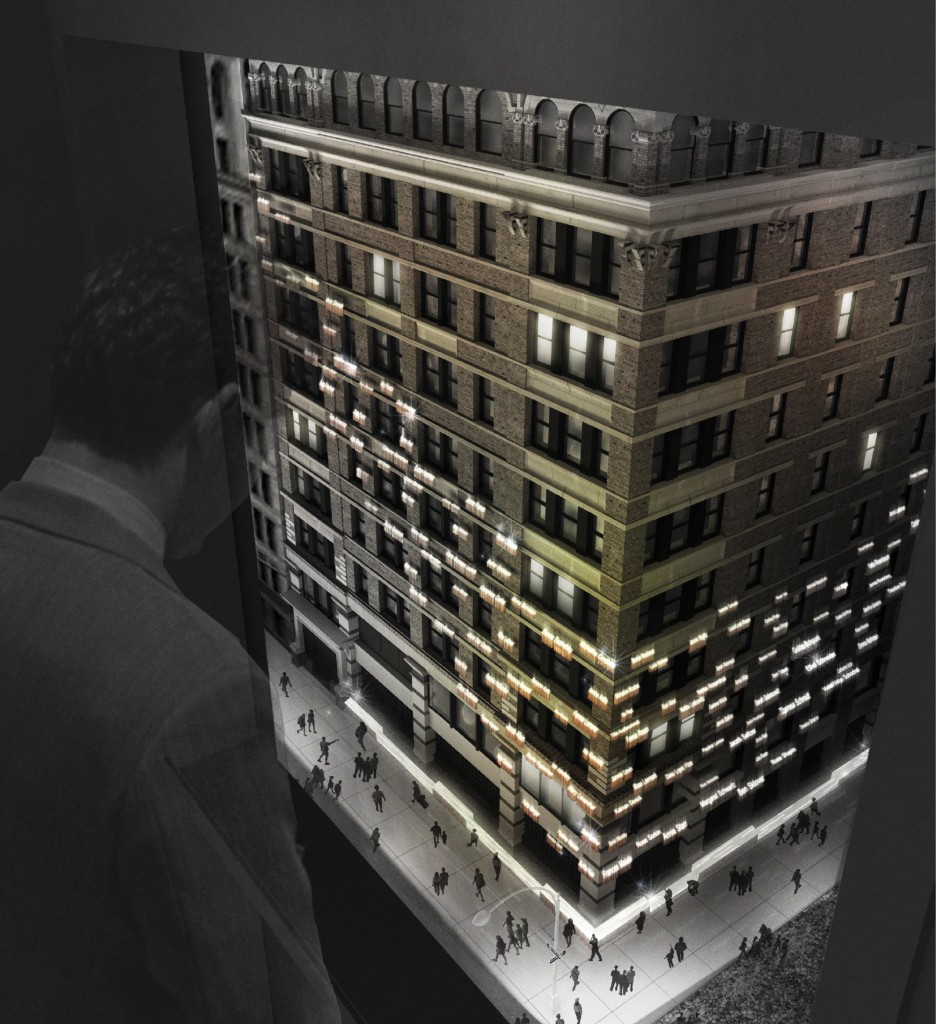The proposed memorial focuses on creating a metaphorical linkage between the past and the current everyday lives of downtown Manhattan. By providing various visual perceptions and multiple sequential experiences, the memorial will become a place where the public can contemplate upon the tragic incident that has taken place a century ago.
The names of the 146 victims are extruded vertically and placed in front of the façades. These objects visually manifest themselves in four distinctive ways, based on where they are observed. From the eye-level, each object is viewed as an abstract pattern of vertical lines. From a distance, the overall arrangement of these elements flow along the two facades, creating relationships with the surrounding public spaces. From the neighboring building’s windows, the names of the victims appear explicitly due to the tapered upper edge of each object. Finally, from the sidewalk along the Brown Building, the reflections of the names emerge from the mirrored surface that is located along the base of the building. The reflective surface is slightly tilted towards the viewer, in order to provide juxtaposed scenery of the names, the skewed view of the building, and the sky beyond. Visitors can bring flowers and place it in the holes provided on the upper part of the reflective surface to express their respect and remembrance. The two elements, upper extruded letters of names and lower reflective surface can be gently illuminated at night.
The extruded names are made of copper and the reflective memorial surfaces are made of mirror finished stainless steel. Both materials are durable, recyclable and easily maintained, making it ideal for exterior architectural application. The rich patina that will build on the copper elements will slowly transform the memorial throughout time. Moreover, the various surface treatment and etched–in information on the lower stainless steel plates will change its appearance dynamically depending on the viewing angles and distances.





